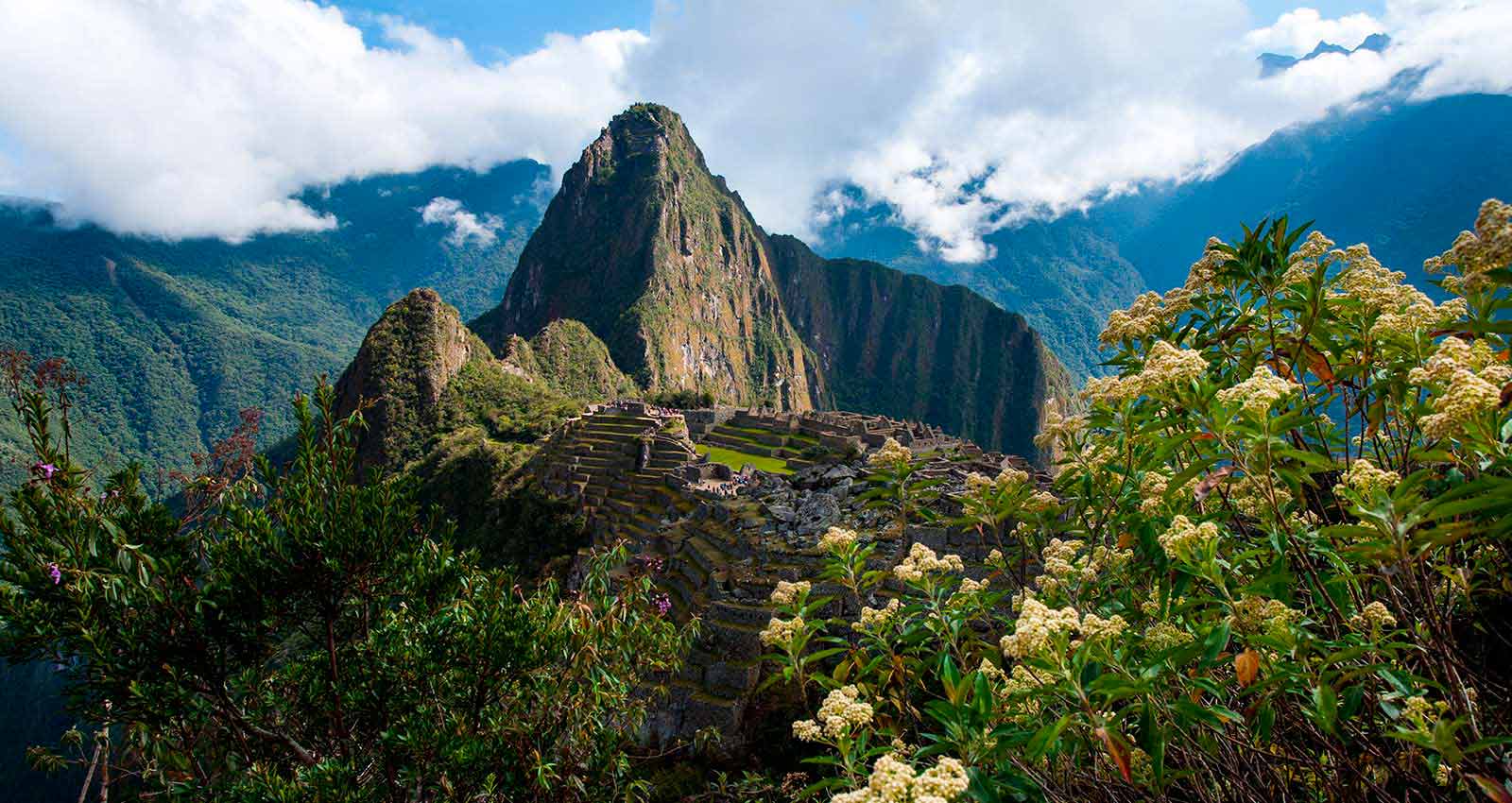So, you’re interested in learning some interesting details and historical morsels about Peru’s most famous archaeological site? Machu Picchu facts can help you prepare for your visit and enhance your understanding of its significance while you’re there!
Get the facts with answers to these questions:
- Where is Machu Picchu is located in Peru?
- What is the Machu Picchu altitude?
- What are the routes to Machu Picchu?
- What are some interesting Machu Picchu Facts?
- History Timeline of Machu Picchu?
Where is Machu Picchu is located?
In Peru, Machu Picchu is located in the…
- Department of: Cusco
- Province of: Urubamba
- District of: Machu Picchu
- GPS Coordinates: 13.1633° S, 72.5456° W
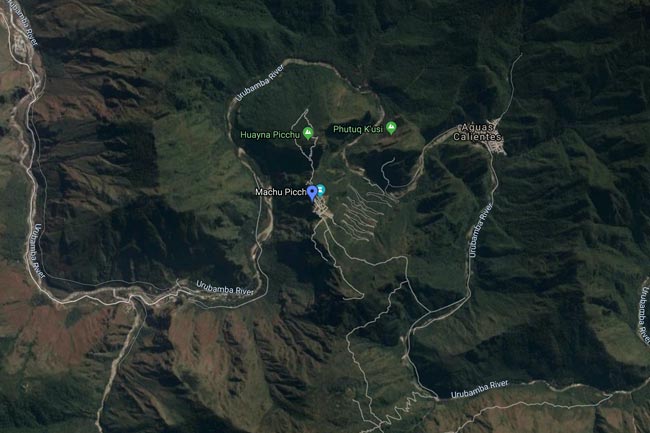
The ruins are located within the Machu Picchu Historic Sanctuary, a UNESCO site, and under the protection of the National System of Protected Natural Areas by the State (SERNAP). The Sanctuary spreads over an area of 32,592 hectares in the basin of the river Vilcanota-Urubamba.
What is the Machu Picchu altitude?
What many travelers don’t initially know is that Machu Picchu is significantly lower in altitude than Cusco, even though only about 50 miles (80 kilometers) separates them.
Altitude Machu Picchu: 2,430 metres (7,970 ft) above the sea level
Here, at a lower altitude in a more tropical region where the highlands meet the Amazon, the weather is more temperate than in Cusco.
Weather Machu Picchu: Generally warm and humid during the day and cool during the night. Temperatures range between 52 and 81 degrees Fahrenheit (11 and 27 degrees Celsius). This zone is normally rainy (1955 mm), especially between November and March.
More Information about Machu Picchu Weather >>>
What are the routes to Machu Picchu?
There are only two ways to get to Machu Picchu.
- Travel by Train: The duration of the train ride depends on where you depart. From Cusco (Poroy Station), the duration is about 4 hours. From the Sacred Valley (Ollantaytambo Station), the duration is about 2 hours.
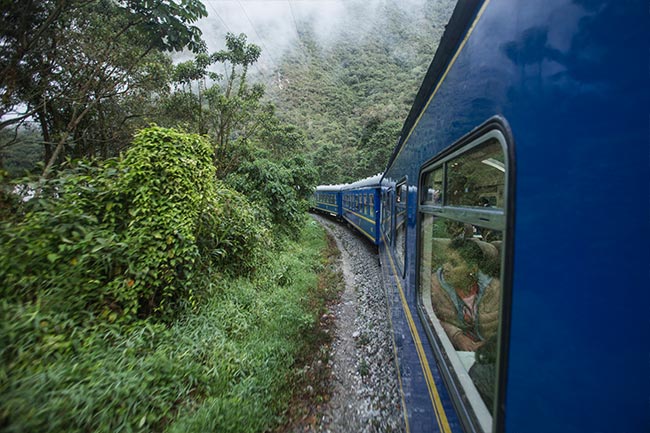
- Adventure Trekking: The “Caminos Del Inca” (classic Inca Trail) is a 4-day trek that takes you to the Sun Gate entrance of Machu Picchu.
What are some interesting Machu Picchu facts?
- Machu Picchu is one of the New Seven Wonders of the World.
- Amazingly, no wheels were used to transport heavy rocks for the construction of the city.
- Structures at Machu Picchu were built with a technique called &ldquo ashlar.” Stones are cut to fit together without mortar. Remarkably, not even a piece of paper can fit in between two stones.
- The citadel has two parts: Hanan and Urin according with the Inca tradition.
- In the Quechua native language, “Machu Picchu” means “Old Peak” or “Old Mountain.”
- Many of the stones that were used to build the city weighed more than 50 tons. How did these stones get up the mountain? Some were chiseled from the granite bedrock of the mountain ridge. For others, hundreds of men pushed the heavy rocks up the steep mountain side.
- On the Inca Trail, many porters sleep with a shiny metal object or mirror beneath them. They believe it sends away spirits coming up through the earth and whisks them away. Ask any guide or porter, and most will tell you that sometimes they have experienced the feeling of being pulled out of their tents by spirits of the past.
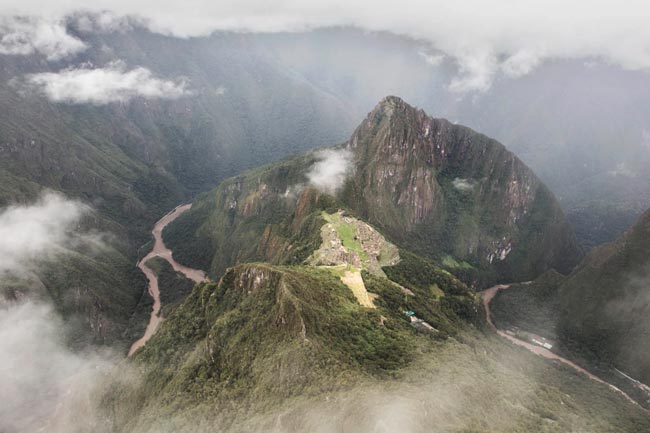
- The exact age of Machu Picchu, the most representative and ancient city of Peru, has been clarified by scientific studies on the geology and archaeology of the site. Learn more about the origins of Machu Picchu
- Machu Picchu is South America’s most impressive archaeological ruin. See how Machu Picchu was constructed
- Many people ask: why is Machu Picchu so important? The Citadel of Machu Picchu is considered the main tourist attraction in Peru and one of the most visited worldwide. Explore Inca ingenuity at Machu Picchu
- Machu Picchu is also known as the Lost City of the Incas. It is a mysterious wonder. A city of stone built without the aid of wheels or iron tools. This is the best example of Inca engineering. More than 600 terraces prevent the city from sliding down the mountain. A water supply system extends over a length of about 1 km. Discover the unsolved mysteries of Machu Picchu
History Timeline of Machu Picchu
- Archaeological evidence shows that people practiced agriculture in the Urubamba and adjacent valleys since 760 B.C.
- Between 1300 and 1500 AD, the Cusco kingdom developed as a city-state, beginning with the government of Manco Capac. The Vilcabamba region can under Inca control in 1440 during a campaign conducted by Pachucutec, the 9th inca king. This was one of the first phases of territorial expansion for what would become the Tahuantinsuyo Empire.
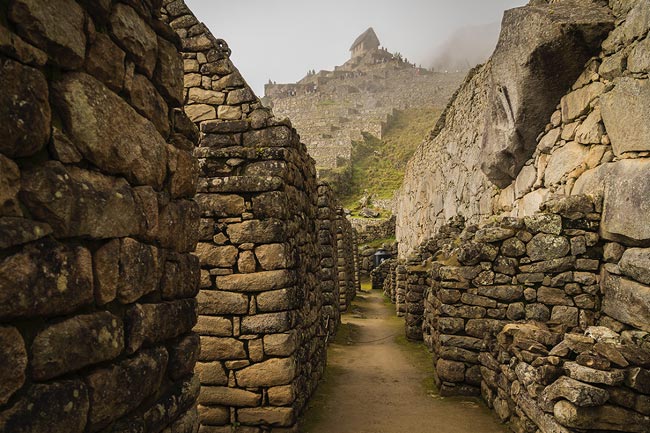
- According to scholars, Machu Picchu was a royal estate built for the Inca king Pachacutec around 1450. Others speculate the Inca city was a sacred center where the great political, religious and economic minds of the Inca Empire gathered. The population of Machu Picchu ranged between 300-1000 inhabitants and consisted mostly of members of Pachacutec’s lineage, religious elite, and highly specialized artisans recruited from across the empire, called yanaconas.
- The valleys in these areas produced a big agricultural surplus. But after the death of Pachacutec, this place lost its importance. His successors built new constructions such as Ollaytantambo that made the route to Machu Picchu less used.
- During the civil war between Atahualpa and Huascar, the rural population was annexed by Mitmas (laborers from other parts of the empire). When the war ended they left this place and returned to their homelands. In colonial times, Manco Inca was exiled in Vilcabamba and Machu Picchu was abandoned. Over the years, Machu Picchu was lost to official memory.
- In the late 1800s, explorers like Antonio Raimondi crossed the grounds of the ruins without knowing where he was. Augusto Berns in 1867 formed a mining company to exploit the treasures of this place.
- In 1911, Hiram Bingham was a history professor intent on finding the last place where the Incas of Vilcabamba were. Guided by a young boy from Mandorpampa, Bingham arrived at the ruins and thought this is the place where the Incas were established after losing their territory. It wasn’t until after his death in the 1950s that the real Vilcabamba was discovered further west of Machu Picchu citadel.
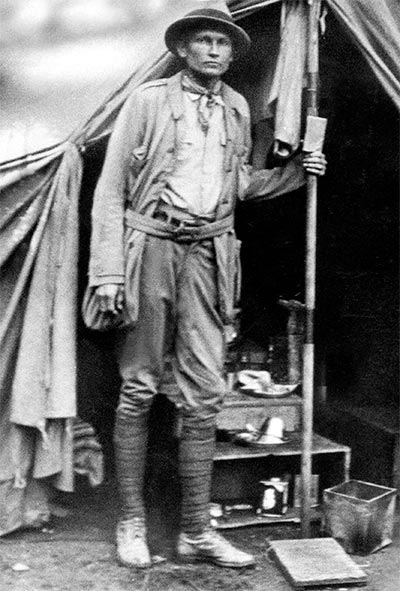
- In 1983, Machu Picchu was declared a UNESCO World Heritage Site.
- In 2012, one year after the 100th anniversary of Machu Picchu’s scientific discovery, all the artifacts excavated by Bingham team’s and shipped to Yale University’s Peabody Museum, were finally returned to Peru. These artifacts are currently on display at Casa Concha (Machu Picchu Museum) in Cusco.
